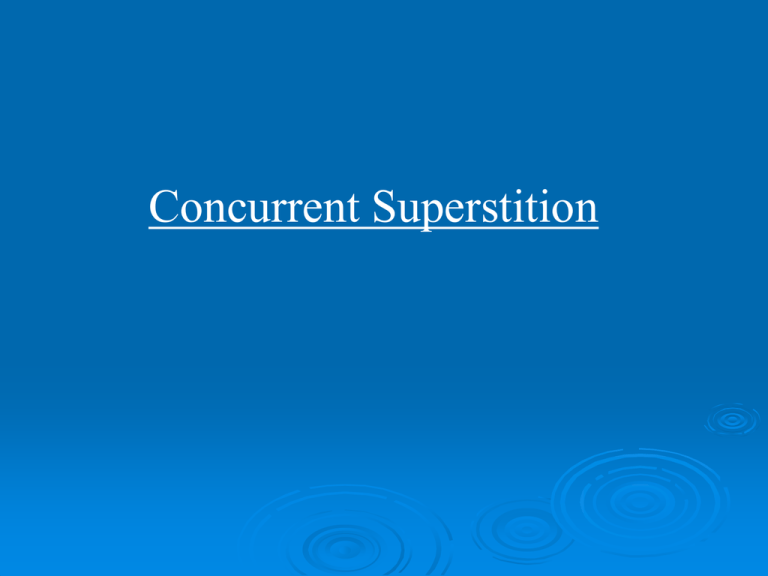Concurrent-superstit..
advertisement

Concurrent Superstition Concurrent Superstition Conc VI VI VI VI Concurrent Superstition Conc VI EXT VI EXT Pigeons c: 7th session of Ext d: 12th session of Ext Humans Concurrent Superstition Conc VI EXT (COD) VI EXT COD: Responses on EXT can’t be immediately followed by reinforcement for responses on VI How CODs are programmed: 1) Timer starts after each EXT response or 2) timer starts after switching to VI. During timing, reinforcement is unavailable for responses to VI Pigeons a: 7th session of Ext b: 12th session of Ext Humans Concurrent Superstition Applied Example No COD FR 1: Mand EXT: Verbal Aggression Tx: 1) Verbal aggression followed by prompt to mand 2) Mand is reinforced Results: Some verbal aggression is maintained by reinforcement of mand Concurrent Superstition Applied Example With COD FR 1: Mand EXT: Verbal Aggression Tx: 1) Verbal aggression followed COD 2) After COD, prompt given for mands Results: If COD is of sufficient duration, verbal aggression should be weakened, if not extinguished Case Review Operant: Behavior attention Current Procedure: (Tx) 1) Behavior = inapp vocals and provoking others 2) Tx = a) Prompt to mand for activity of choice Probe: (Tx1) 1) Behavior = inapp vocals and provoking others 2) Tx = a) Prompt to go to room under observation for 5 minutes b) Prompt to mand for activity of choice Case Review COD Duration? Delay Reduction Hypothesis •Stimuli will function as conditioned reinforcers if they signal a reduction in the average delay to reinforcement. •Or, given the choice between 2 stimuli, organisms will choose the stimulus that is “closer” to positive reinforcers, or “farther” from negative reinforcers. Delay Reduction Hypothesis Problem: How long is COD? Mand Reinf: 1 every 15 minutes Verbal Aggression 1. Timeout = 5 minutes 2. Prompt 3. Mand reinf Delay Reduction Hypothesis Problem: How long is COD? Mand Reinf: 1 every 5 minutes Verbal Aggression 1. Timeout = 10 minutes 2. Prompt 3. Mand reinf










